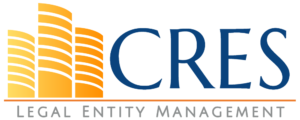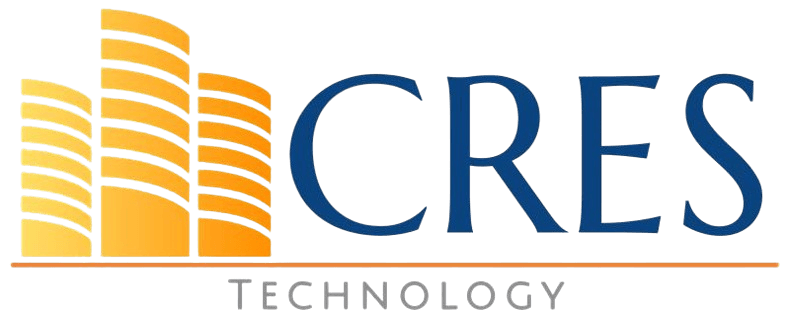
Managing legal entities across different states, provinces, or regions can be complex, especially with varying compliance requirements, reporting standards, and governance rules. Without a coordinated approach, companies may face increased risks, inefficiencies, and potential penalties.
A centralized legal entity management system can help address these issues by improving consistency, reducing errors, and supporting compliance efforts. This blog will cover the key aspects of legal entity management, the advantages of centralization, and practical steps businesses can take to streamline their legal entity processes and manage risk more effectively.
Understanding Legal Entity Management
What is Legal Entity Management?
Legal entity management refers to the processes and systems used to oversee an organization’s legal entities, ensuring compliance with regulatory requirements, maintaining corporate governance, and supporting seamless business operations. It involves managing a wide range of activities, from filing annual reports and maintaining accurate records to monitoring ownership structures, maintaining corporate contracts and legal entity documents, and ensuring tax compliance.
For organizations operating across multiple locations or industries, and organization with complex ownership and investment relationships, legal entity management is critical. It ensures that each entity adheres to local laws and regulations while maintaining alignment with the organization’s overarching goals and ensuring clear understanding of entity structures. Think of it as the backbone of corporate governance—keeping everything running smoothly and legally.
Why is Legal Entity Management Critical?
Managing multiple legal entities is no small feat. Businesses must navigate a web of regulatory compliance requirements, reporting obligations, and location-specific rules. Without a robust system in place, the risks are significant:
- Financial Penalties: Missing deadlines or filing incorrect information can result in hefty fines.
- Reputational Damage: Non-compliance can erode trust with stakeholders, including investors and customers.
- Operational Inefficiencies: Disorganized processes lead to wasted time and resources.
One of the most pressing compliance requirements today is related to Ultimate Beneficial Owner (UBO) regulations. These rules mandate organizations to identify and report the individuals who ultimately own or control their entities. Staying on top of such evolving requirements is essential to avoid penalties and maintain transparency.
The Challenges of Legal Entity Management

- Fragmented Data: Decentralized systems often result in inconsistent and inaccessible data. Most off-the-shelf entity management tools don’t integrate with existing systems such as ERP systems or PMS (Property Management Systems). This makes compliance and reporting a logistical nightmare, especially for organizations with entities spread across multiple jurisdictions and complex entity structures.
- Compliance Risks: Missing deadlines, filing errors, or failing to meet jurisdiction-specific requirements can lead to severe consequences, including fines and legal action.
- Inefficiencies: Managing entities across disparate systems or teams often results in duplicated efforts, wasted resources, and frustration.
- Lack of Visibility: Lack of a centralized system for entity management limits oversight, making it difficult for leadership to make informed, strategic decisions.
- Lack of Visualization: Without a robust centralized legal entity management system, its difficult to comprehend entity relationships. In many organizations people manually maintain org charts to visualize entity relationships, which is a resource intensive activity.
The Benefits of Centralizing Legal Entity Management
- Improved Compliance: Centralized systems ensure timely filings, accurate reporting, and adherence to regulatory requirements, reducing the risk of penalties.
- Enhanced Data Accuracy: Integration with source PMS or ERP systems as single source of truth eliminates inconsistencies and ensures reliable data across all entities.
- Visualization of Entity Relationships: A graphic representation of entity relationships, makes it easier to understand entity relationship structure.
- Operational Efficiency: Streamlined processes save time and resources, allowing teams to focus on strategic initiatives rather than administrative tasks.
- Risk Mitigation: Centralized oversight helps identify and address potential risks before they escalate into larger issues.
- Better Decision-Making: Consolidated data provides actionable insights, empowering leadership to make informed decisions that drive growth.
Key Features of an Effective Legal Entity Management System
- Centralized Database: A unified platform for storing and managing all entity-related information.
- Centralized Document Management: A unified platform for storing and managing all entity-related contracts and documents.
- Compliance Tracking: Tools to monitor deadlines, filings, and jurisdiction-specific requirements, ensuring nothing falls through the cracks.
- Automation: Automated workflows for routine tasks like document generation and reporting, reducing manual effort and errors.
- Integration: Compatibility with other business systems, such as PMS, ERP or financial software, for seamless data sharing.
- Scalability: The ability to grow with your organization as new entities are added, ensuring long-term usability.
Strategies for Simplifying Legal Entity Management
- Adopt a Centralized Platform: Invest in a robust legal entity management system to consolidate data and processes, creating a single source of truth.
- Standardize Processes: Develop standardized workflows and templates to ensure consistency across all entities, regardless of location or jurisdiction.
- Leverage Technology: Use automation and AI tools to reduce manual effort, improve accuracy, and free up resources for strategic initiatives.
- Ensure Cross-Department Collaboration: Foster communication and alignment between legal, finance, and compliance teams to streamline operations and avoid silos.
- Regular Audits: Conduct periodic reviews of entity data and processes to identify gaps, ensure compliance, and maintain data integrity. Ofcourse a robust centralized legal entity management tool can make this audit easier.
Reducing Risk Through Proactive Legal Entity Management
- Monitor Regulatory Changes: Stay informed about evolving laws and regulations in all jurisdictions where you operate. Proactive monitoring can help you adapt quickly and avoid penalties.
- Implement Strong Governance Practices: Establish clear roles, responsibilities, and accountability for entity management to ensure nothing is overlooked.
- Train Your Team: Provide ongoing training to employees so they understand compliance requirements and best practices, reducing the likelihood of errors.
- Engage Experts: Work with legal and compliance professionals to navigate complex regulatory landscapes and ensure your organization remains compliant.
Conclusion
Centralizing legal entity management is not a luxury—it’s a necessity in any complex business environment. By consolidating data, streamlining processes, and leveraging technology, organizations can reduce risk, improve compliance, and drive operational efficiency. Whether you’re managing a handful of entities or a global portfolio, adopting a proactive and centralized approach to legal entity management will position your business for long-term success.
Ready to simplify your legal entity management? Start by evaluating your current processes and exploring centralized solutions that align with your organization’s needs. The time to act is now—because when it comes to compliance and risk, prevention is always better than cure.
How we can help:
Manage your entity structures, ownerships, investments, associated assets, contract lifecycles, and documents in a centralized location.

Previously, our clients had trouble managing their legal entities, as this process can be fairly complex. It was hard for them to maintain entity structure, data, documents, and processes. They needed a system that could do all of these things and integrate with their property management system. That’s where CRES Legal Entity Management came in.
With CRES Legal Entity Management, you can easily maintain legal entity structure, data, documents, and processes. You can associate legal entities to your properties and manage their documents and contracts in one location.
About Irfan Butt

CRES Technology – Founder and CEO
A strategic leader with over twenty years of progressive experience in Business Administration, Finance, Product Development, and Project Management. Irfan has a proven track record in a broad range of industries including hospitality, real estate, banking, finance, and management consulting.





